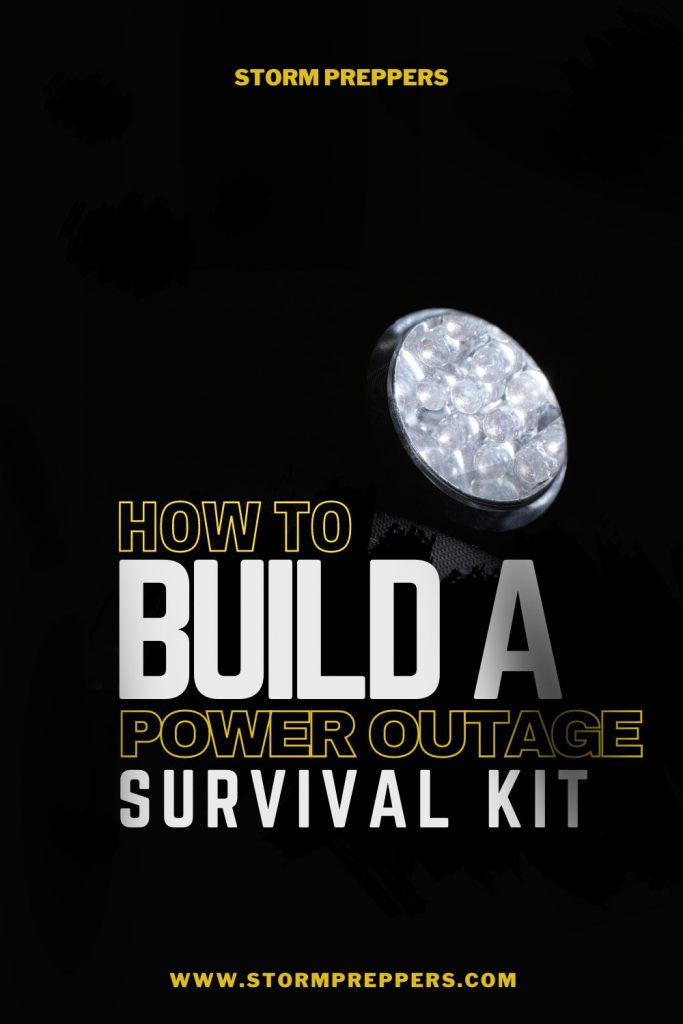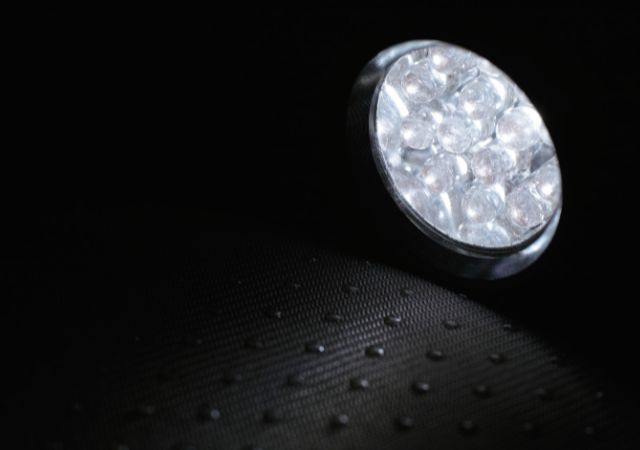Power outages are definitely hard to bear but not unbearable when you have the right supplies and everything planned out. Although it can take days to plan for such an event, it will be well worth it. One of the most important things you can do is build a power outage survival kit. So, now that the Atlantic hurricane season is about to heat up, it is time to put things in motion.
What Causes Power Outages
According to studies, 70% of power outages in the United States occurred solely because of extreme or bad weather conditions. To be specific, power outages can be caused by hurricanes, rains, thunderstorms, snow, ice, and dust. These studies confirm that the correlation between power outages and bad weather conditions is strong, and you have to be prepared for them.
5 Ways to Prepare for a Power Outage
One of the underlying principles of Storm Preppers is to be prepared for any tropical storm or hurricane. That means you are preparing for the many tropical storm impacts which accompany bad weather. Because the risk of power outages is high, residents in areas that may be impacted by any type of natural disaster should prepare for blackouts.
Here are the best five ways to prepare for a power outage:
1. Store Adequate Amounts of Water
Because most water companies use pumps to distribute water to customers, a power outage in a particularly bad storm could render those pumps useless. And, because water is needed for basic activities such as cooking and bathing, it is very uncomfortable to be without it for an extended period of time. Make sure you store enough water to last for at least two weeks.
2. Store Sufficient Amounts of Food for Your Family
Food is important, and if you are dealing with a power outage, it may be difficult to get food. In the aftermath of many tropical storms, stores kept their doors closed because they too were dealing with the blackout. Payment systems, lighting and other operations were rendered inoperable because there was no electricity to power them.
3. Purchase a Battery-Operated Light
We depend on electricity and without it at night, things can be pretty messy and scary. By having a battery-powered light at night during a blackout, you can at least see to move around your home. A useful tip is to make sure that your power banks are fully charged, so that you can charge your devices as they lose juice. Also, don’t forget to stock up on good quality batteries.
4. Stock up on Gas
Throughout the six months of the Atlantic hurricane season, keep your vehicles topped up with gas. This is because there is a possibility that you may need to evacuate quickly if a tropical storm threatens your area. In years gone by, there have been many examples of long lines of cars trying to get gas, gas stations rationing their gas supplies and gas stations even closing down because they ran out of stock.
5. Stay Updated With Radio Broadcasts
During a tropical storm, you should always stay connected to the local news in your area. This is the best way to stay up to date on the local power outages, what progress is being made to connect customers and updates on who you should contact if your power outages persist.
What to do Before, During, And After a Power Outage
You should be ready in the event that a power outage occurs. Here are a few things to keep in mind during and after a power outage:
Things to Do During a Power Outage
- Keep your food as safe as possible.
- The refrigerator and the freezer can keep your food safe for hours, so consider keeping them closed, and only open them if necessary.
- Use the food items from the refrigerator and then move on to the freezer. A full freezer can maintain its temperature for nearly 48 hours, whilst a half-full freezer can maintain its temperature for 24 hours.
- Disconnect or unplug all electronics and appliances. This is to prevent damage that can be caused by power surges.
- Stay off the roads and keep your travelling to a minimum. This will help you to stay safe and preserve the fuel in your vehicle.
Things to Do After a Power Outage
- When the power comes back, stay away from downed power lines in your area. Ensure that you keep your kids and pets away from them as well.
- Report downed power lines, fallen and damaged poles and meters to the electric company
- Open up the freezer, take a food thermometer and check if the food items are below 40 degrees Fahrenheit. If they are, you can refreeze them.
- Throw away all perishable food items that have been exposed to temperatures above 40 degrees Fahrenheit.
How to Build a Power outage survival kit
Preparing for a power outage is not something you can do in one day. Unfortunately, there is no guarantee that you will be pre-advised when a power outage will occur in your neighbourhood. These events are caused by factors that are way beyond our control. However, it is possible to prepare for a blackout and build a power outage survival kit.
Whenever there is a blackout, especially a long-lasting blackout, chaos ensues. People go frantic and buy up supplies such as flashlights, batteries, LED candles and lamps. This is understandable because being at home in the dark at night is a humbling experience. And it can be even be mentally draining if you do not have any supplies.
1. Prepare a 72-hour Emergency Kit
Whilst there is still time, stock up on things like flashlights, LED candles, battery operated radios and batteries. Store these items in a central location so that you can find them if you are suddenly without electricity. One tip is to pack them into a duffel bag, backpack, or even water-tight containers. Alert your family members where the container will be kept and explain when it should be used. Remember that it should be stored where it can be easily accessed without too much trouble.
2. Stock up on Food, Water, and First-Aid Items
Your power outage survival kit should contain food, water, and a first aid kit. Stockpile enough food and water for at least three days. This means that you must have enough water and ready-to-eat food for each family member. When preparing your first-aid kit, include icepacks, whistles, medicines, eyewear, and plastic bags.
3. Pack a Tool Bag
Another tip for building a power outage survival kit is to put as many basic tools together as possible and build an emergency tool kit. Your arsenal should include basic tools such as screwdrivers, wrenches, pliers, hammers, duct tape, masking tape, gloves, masks, face shields, essential documents, extra keys to your car and house and a local map.
4. Pack Games and Puzzles
During a power outage, you will need distractions to keep your family busy and free from boredom. During the day you can go do things inside the house. But at night time, everyone should be safe and sound inside the home. Unfortunately, it will be very boring sitting in a mostly dark house doing nothing. To counteract this, you can play board games, cards, or fix puzzles. Remember to pack games and puzzles in your power outage survival kit to help you pass the time.
5. Purchase a Generator
An option for larger appliances such as your refrigerator and stove, is to purchase a generator. Remember, whenever you use a generator, it must be kept outside in a dry location and never used indoors. Generators should remain dry, and must be used in a well-ventilated area. Consider installing carbon monoxide detectors throughout your home to detect any harmful fumes from the generator. You will also have to stock up on fuel, which should be stored in a safe and dry place.
Ideally, your power outage emergency kit should have enough supplies to last for at least three days. In bad situations, you never know when your power will return. However, with the right backup plan and supplies, you can survive a power outage.
Image: engin akyurt via Unsplash




